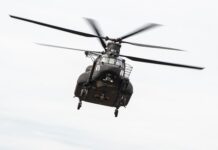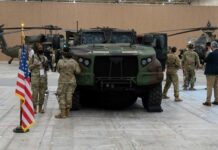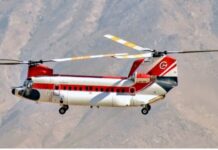In this article, Ian Frain examines some of the heavy-lift helicopter programmes from the recent past and present.
Currently, there are only four heavy-lift platforms in the world. The twin-engine, eight-blade Russian Helicopters Mil Mi-26, NATO reporting name Halo, is the largest helicopter currently in service, since the late 1980s. Then there is the three-engine, six-blade Sikorsky (a division of Lockheed Martin) CH-53K King Stallion and the slightly smaller CH-53E Super Stallion, and in service in Germany, the smaller tandem-engine CH-53G/GS/GA. Finally, there is the iconic twin-engine, twin-rotor Boeing CH-47F Chinook and the older CH-47D.
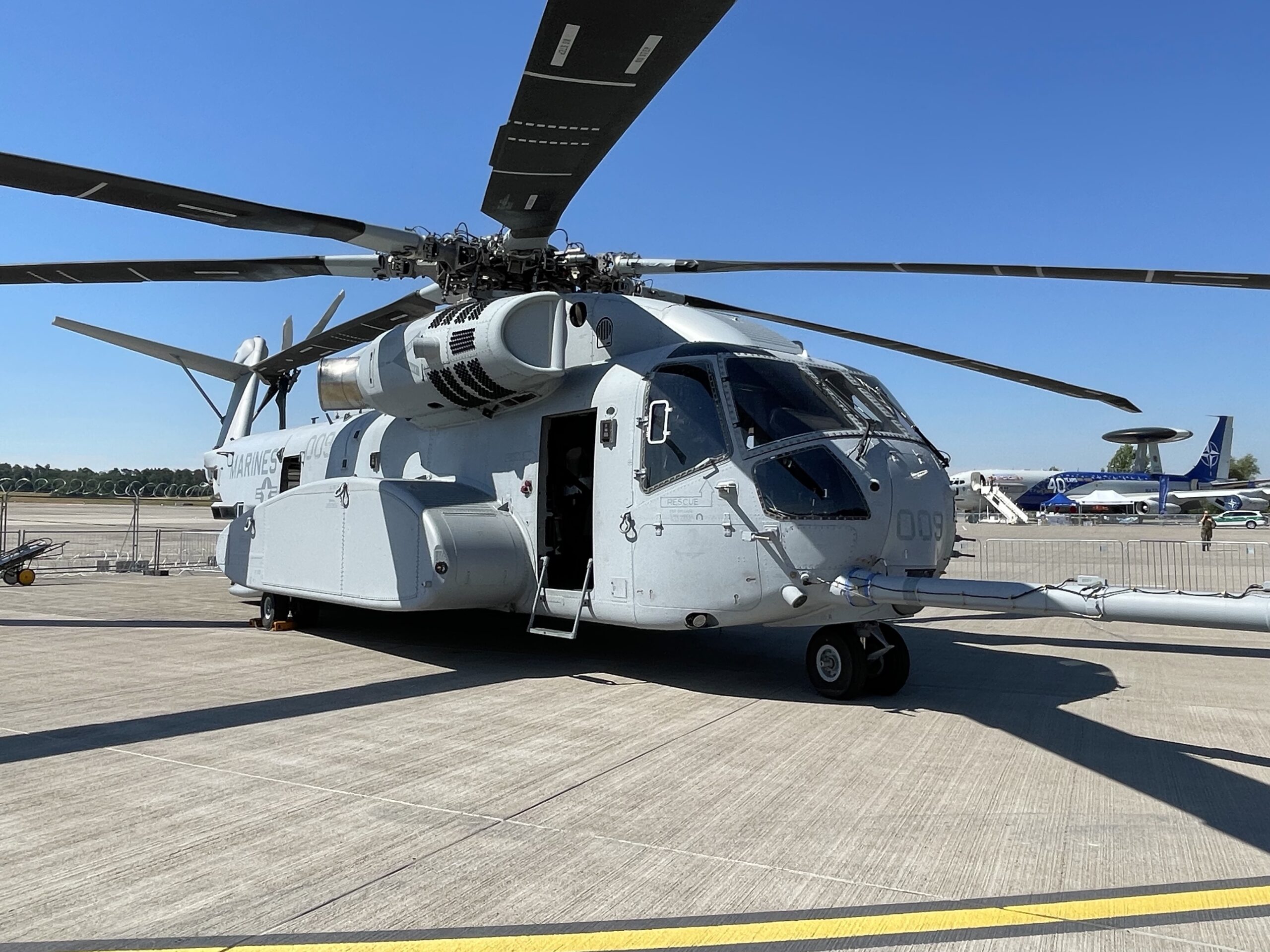
Credit: Ian Frain
From the late 1950s, Sikorsky led the way with heavy-lift helicopters such as the CH-37 Mojave, in service with the United States Army and United States Marine Corps (USMC), which had the unusual clamshell front opening cargo doors. There was also the S-64 /CH-54 Tarhe flying crane. The CH-54 Tarhe was simply a front cabin for two pilots and crew chief, with a conventional main rotor head and high tail rotor, and an empty space from the cockpit onwards. The purpose of this was so it could lift and carry modules, such as a medical evacuation surgical pod, aRiverine Patrol Boat (RPB), or artillery howitzer, as well as damaged aircraft and much more. During the Vietnam War, the Tarhe performed these essential tasks, and additionally it also dropped the ‘Daisy Cutter’ 6,800 kg (15,000 lb) bomb to flatten the jungle trees in order to create landing zones for the helicopters.
In the early 1960s, Sud Aviation, which became Aerospatiale and then Airbus Helicopters today, developed the SA321 Super Frelon, which served for around four decades with the French Navy aviation (Aéronavale) in the anti-submarine warfare (ASW), and SAR roles until 2010. In China, it still serves, albeit in smaller numbers, as the licenced built Z-8KH. The Super Frelon was also exported as a heavy cargo helicopter to the Middle East, including to Israel, Iraq, and Libya.
The Russians designed and built a few heavy transport cargo rotorcraft from the Mil Design Bureau (now Russian Helicopters JSC), from the late 1950s. The five-bladed Mi-6 Hook was powered by a pair of Soloviev D-25V turboshaft engines, and was followed by the Mi-10 Harke produced in either the regular Mi-10K short leg, or Mi-10R long leg able to carry large vehicles, such as tanks, artillery or coaches, on a platform between the legs. There was also the monstrous MiI V-12 Homer, which was the largest rotorcraft ever built and had transverse /side-by-side main large rotors, and was intended to transport the Soviet Intercontinental Ballistic Missile (ICBM), but the programme was short lived, and after a decade of development with only two prototypes produced, it was cancelled in 1974.
How Heavy is your Halo?
After the MiI V-12 came the Mi-26T Halo, the largest helicopter in the world to this day, with its first flight in 1977 and entering service in 1985.
The compartment, which is 12 m long, 3.3 m wide and 3.2 m high, can hold two combat vehicles of approximately 1,000 kg each. Two electric winches on the overhead rails are used to move loads into the cabin. It also boasts a closed-circuit television camera to monitor the positioning of an underslung load. It has a fixed, tricycle-type, landing gear, with two steerable nose wheels. A hydraulic crane allows for loading cargo from different surfaces through rear doors (tail fuselage), using ladders and sub ladders. The take-off weight is displayed on a device fitted on the main gear’s shelf on the rear side of the flight engineer seat.
The Mi-26 boasts many advances in safety devices, such as electrically de-iced main and tail rotor blades, infrared jammers, infrared suppressors, infrared decoy dispensers, and a colour-coded identification flare system to protect the helicopter from ballistic missiles. Infrared jammers block any infrared signal transmission to protect the helicopter from infrared missiles.
The King of the Corps
The development of the CH-53K dates back to April 2006, when the Naval Air Systems Command (NAVAIR) signed the System Design & Development contract for the heavy-lift replacement helicopter with Sikorsky, which had been maturing its ’CH-53X’ design for several years. The last of the CH-53D Sea Stallions was retired in 2012, but the CH-53E Super Stallions are expected to continue through the 2020s.
The first CH-53K was rolled out in May 2014 and named the King Stallion by the Marines. The aircraft made its first flight in October 2015. Since then, the four engineering development model (EDM) King Stallions have accumulated more than 850 flight test hours, plus nearly 800 hours of ground testing on the Ground Test Vehicle (GTV). With these aircraft, the programme completed its first operational testing phase (OT-B1) in 2016. In March 2017, the CH-53K passed its Milestone C review, which provided authorisation to buy up to 26 low-rate initial production (LRIP) King Stallions in four lots over the fiscal years 2017 to 2020.
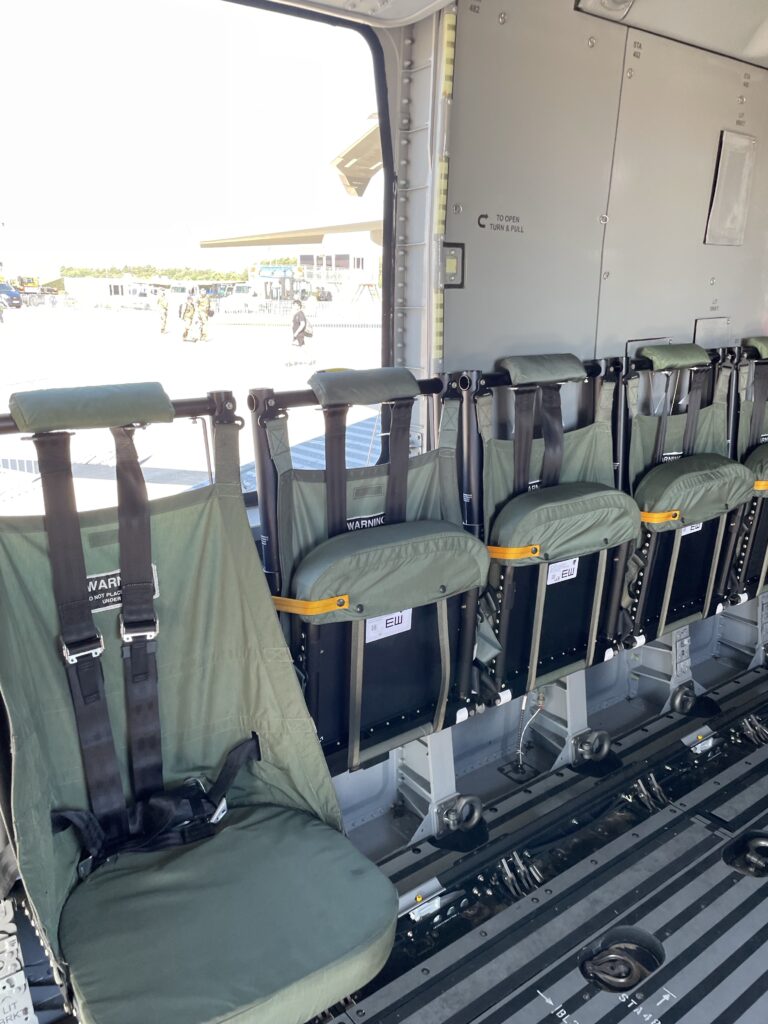
Credit: Ian Frain
The aircraft has demonstrated that it can fly with an external lift load of 36,000 lb (16,300 kg). One unique external load test involved lifting the new Joint Light Tactical Vehicle (JLTV) in January 2018. The JLTV has a curb weight of 6,400 kg (14,000 lb) and will replace the venerable High Mobility Multipurpose Wheeled Vehicle (HMMWV). The helicopter has also undergone 60° bank turns, flying at 5,600 m (18,500 ft) mean sea level (MSL), and weapons firings, among other tests.
The King Stallion is a three-engine helicopter, powered by three General Electric T408-GE-400 engines. Compared to the T64 engines on the CH-53E, the King Stallion’s 5,600 kW (7,500 shp) engines have 57% more power, 18% less fuel consumption, and 63% fewer parts. The engines are also equipped with dual channel Full Authority Digital Engine Control (FADEC). Overall, the T408 engines greatly contribute to King Stallion performance in general, and especially in ‘hot and high’ conditions. In addition to its incredible lifting capabilities, the King Stallion has demonstrated level flight above 333 km/h (180 kn) and over 370 km/h (200 kn) in a dive.
A Knighthawk in Shining Armour
A real life mission occurred by chance during the first week of September 2021, when the King Stallion hoisted a smaller twin-engine Sikorsky MH-60S Knighthawk belonging to Naval Air Station Fallon in Nevada, ‘Longhorn’ base SAR unit, from difficult terrain, near Mount Hogue, in the White Mountains at 3,658 m (12,000 ft) MSL. The MH-60S had made a hard landing several weeks earlier in July, while assisting civilian authorities in searching for a missing hiker on the California/Nevada border, when the mishap occurred. The crew of the Knighthawk were not injured and were subsequently rescued the next day, but it was up to the King Stallion to rescue their craft.
During the same month, a pair of King Stallions were undergoing the Initial Operational Test and Evaluation with the Marine Corps Air Station (MCAS), Yuma based Marine Operational Test and Evaluation Squadron One (VMX-1), at Marine Corps Air Ground Combat Center (MAGCC) located at Twentynine Palms in California, when they were tasked by the Navy Safety Centre to recover the MH-60S from the mountain. The MH-60S weighs 6,895 kg (15,200 lbs), and as the lifting capability of the King Stallion is almost double that, at 27,000 lbs, it was the only helicopter capable of carrying out the mission.
The Philadelphia Twin
The iconic Boeing CH-47 Chinook has seen action with the United States Army from the early days of the Vietnam War, to Grenada and Panama and the first Gulf War, and in the last two decades, it has played a vital role in the global war on terror, including in Afghanistan and Iraq. The Chinook has also seen action with the UK Royal Air Force (RAF) from the 1982 Falklands War, to Sierra Leone at the turn of the century, and operations in Afghanistan and Iraq. Outside of its military duties, the Chinook has also participated in humanitarian operations both at home and abroad.
The CH-47F is the latest model, and entered service with the United States Army in 2010, but the concept and development date back to the 1990s, with the proposed Aerial Cargo Transport, which had four blades, but this was cancelled. The actual CH-47F programme came about as a Service Life Extension Program (SLEP), which would fill a twenty-year gap until the Joint Future Transport Helicopter would come into service.
At the end of 2010, the new Foxtrot also reached the European theatre when the 12th Combat Aviation Brigade in Germany received their airframes, replacing the Delta models. In 2014, the 300th CH-47F was delivered to the United States Army.
Currently in Europe, the British RAF is the largest operator, followed by the Italian Army Air Cavalry (ALE), Spanish Army Aviation (FAMET), the Royal Netherlands Air Force (KLu), and Hellenic Army Aviation. The Turkish Land Forces Army Aviation is the newest member of the Chinook club with the CH-47F. The Italian ALE operates the ICH-47F (manufactured under licence by Leonardo), while the Spanish and Dutch have upgraded to the Foxtrot. The Greeks on the other hand are still operating the earlier CH-47C models.
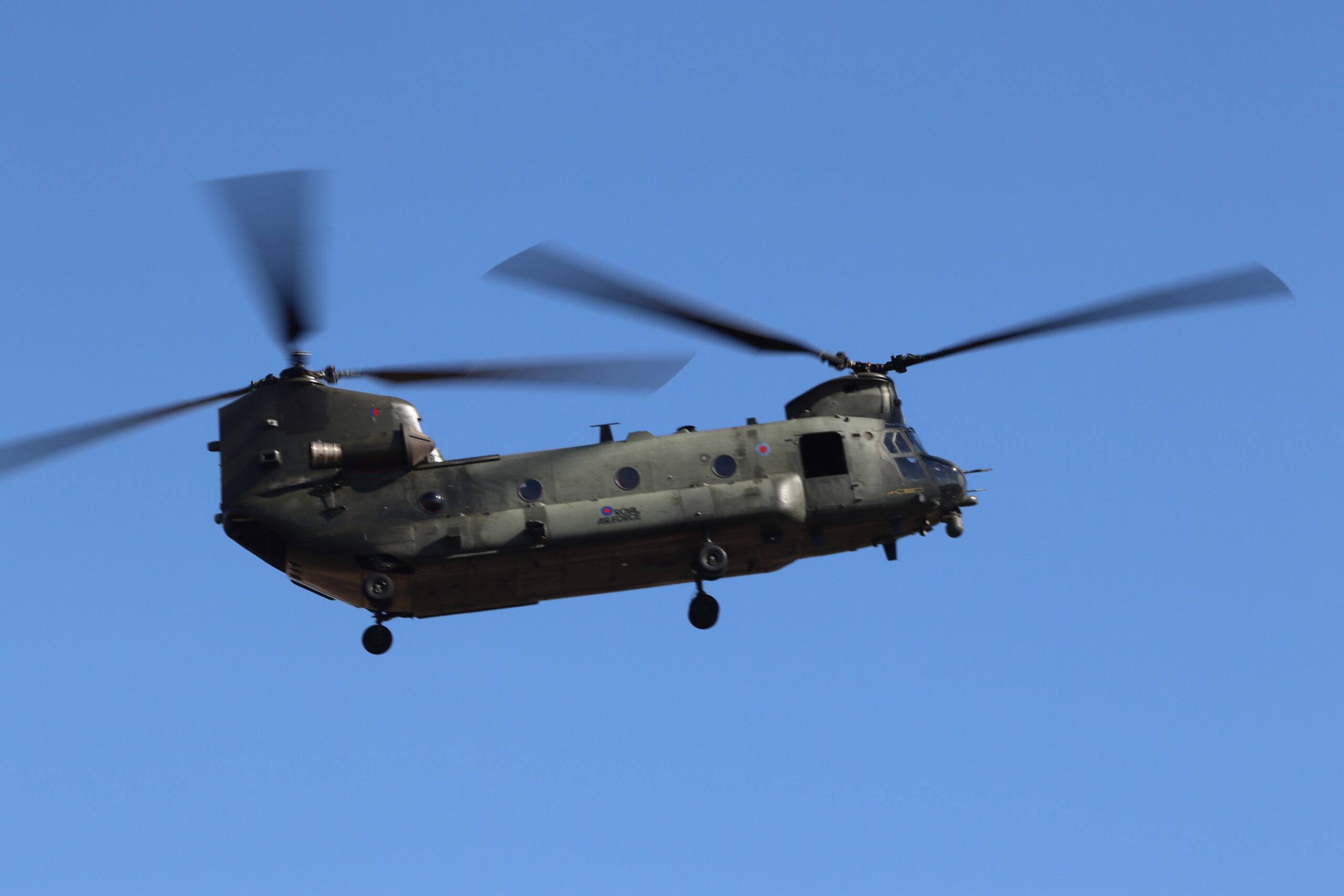
Credit: Ian Frain
Block II is a modernisation of the CH-47F Block I; this allows roughly around an 8% increase in gross weight from the Block I. Some of the system improvements started with reduction in weight with features such as the reduced weight ballistic protection and lightweight fuel system (LFS). The result of this is the ability to add an additional 378.5 litres (100 US gallons) of fuel.
The easing of pilot workload and handling qualities includes a redesigned flight control system; digital automatic flight control system (DAFCS), and an updated common avionics architecture system (CAAS). Regarding the engine and powerplant, there is an upgraded drive train system and Improved Drive Train (IDT). The main rotor head was projected to have a new rotor blade design called the Advance Chinook Rotor Blade (ACRB), however, as of 2022, the Army decided the ACRB would be removed altogether with the Block II entering production.
A Heavy-Handed Future
In 1970, the United States Department of Defense (DoD) drafted a proposal for a large heavy-lift helicopter (HLH). In 1971, Boeing Vertol was issued the contract to build the XCH-62 tandem rotor, four blades, as opposed to the usual three-blade Chinook, flying crane but due to a number of technical difficulties, especially with some of the major components in testing, the Army subsequently cancelled the programme.
The United States Army is conducting studies into a new heavy-lift platform post-Chinook with its future plans, including the Future Long Range Assault Aircraft (FLRAA). The Bell V-280 Valor tilt rotor has already been selected for the Future Vertical Lift (FVL) programme
Erickson, which took over the manufacturing of the legacy S-64 (CH-54) from Sikorsky, purchased the licencing rights from Sikorsky in the 1990s. In 2021, Erickson Inc. was pitching the US military on an autonomous variant of its heavy-lift Air Crane helicopter, the S-64F+. Erickson announced in 2020 that it had partnered with Sikorsky to give the S-64 autonomous flight capabilities. The helicopter’s mechanical flight controls will be removed and replaced with fly-by-wire controls, and Sikorsky’s Matrix autonomous flight control technology. Sikorsky’s Matrix-controlled helicopters, such as a retrofitted UH-60A Black Hawk, have relied on sensors, such as Lidar and cameras, as well as digital terrain obstacle databases, to guide their autonomous flights.
As for the future, at the 2019 Russian International Aviation and Space Salon (MAKS) in Zhukovsky, near Moscow, the Russian Minister for Trade and Industry, Denis Manturov, and China’s Minister of Industry and Information Technology, Miao Wei, announced a collaboration on a heavy helicopter development programme. This was something that had been rumoured for several years, but was now coming to fruition: “For the next step, the Chinese government will accelerate the progress for project approval and finish it as soon as possible, so the project can officially start,” Miao Wei said.
The initial information on the project was exciting, with the ‘Advanced Heavy-Lift’ expected to be in the 40 tonne class, with a weight-lift capability of 15 tonnes, a range of 630 km, and a top speed of 300 km/h. However, nothing has been heard of the project since 2021, and with the current situation in Ukraine, it would seem unlikely to progress.
Ian Frain



